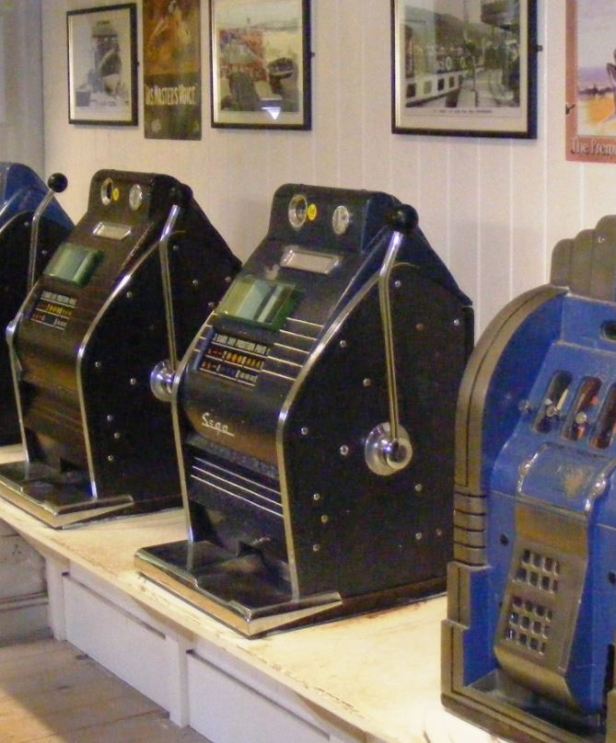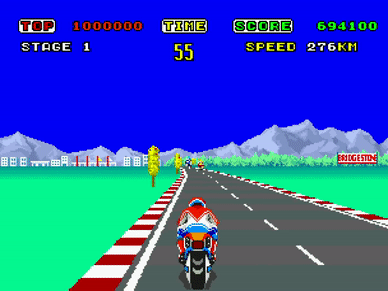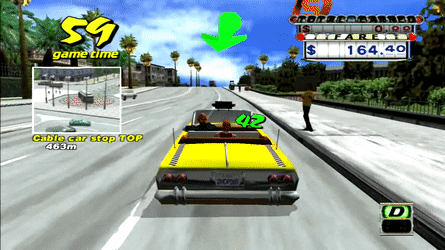
One of the video game companies with the most interesting journeys is Sega. In the arcade era it was a dark horse developer that outpaced the competition when it came to technological power, and in the nineties it was the first serious challenger to video game company Nintendo in the home console wars, but within the next decade it had a pretty shocking fall from grace. Although the company is still around today and developing and publishing great games, the public turned on them in the late nineties and its reputation in hardware development never recovered. For many Gen-Xers and millenials, Sega is more highly regarded for what they used to be than what they are.
The origins of the company go back to 1939, when three American businessmen named Martin Bromley, Irving Bromberg and James Humpert had the idea to entertain troops deployed in World War II who were in need of something fun to do on their down time. They established Standard Games in 1940, based in Honolulu, Hawaii with coin-operated amusement games their main product.

The company was sold in 1945 following the end of the war but it continued its association with the military and it was renamed Service Games in 1946, a jukebox and slot machine developer (the first time Service Games was abbreviated to “Sega” was on their slot machines in 1954). The only problem was that slot machines were outlawed in the United States in 1952. As a result, Bromley sent employees Richard Stewart and Ray LeMaire to Tokyo to provide slot machines to U.S. troops deployed in Japan instead, and over the next decade the distribution efforts of Service Games spanned South Korea, South Vietnam and the Philippines as well.
Following investigations of criminal business practices, the company dissolved in 1960 and Bromley established two new companies in Japan called Nihon Goraku Bussan and Nihon Kikai Seizō to take over the previous company’s business activities and buy out its assets.
Goraku Bussan served as a distributor for coin-operated machines under the name Utamatic, Inc., and Kikai Seizō focused on manufacturing slot machines under the name Sega, Inc. In 1964 the two companies merged under the name Nihon Goraku Bussan.
In 1965, the company started to shift its focus away from the military and towards the public at large following the purchase of Rosen Enterprises, a company founded by U.S. Air Force officer David Rosen who launched a photo booth business in Tokyo in 1954 and who later imported coin-operated games into Japan. After the acquisition of Rosen Enterprises, Nihan Goraku Bussan installed David Rosen as the CEO and managing director, Richard Stewart as president and Ray LeMaire as director of planning. In addition, the official name of the company was changed to Sega Enterprises, Ltd.
Sega’s amusement machines included jukeboxes, pinball machines and shooting games but the first original game Sega developed itself was the 1966 arcade game Periscope which was such a success in Japan that it was distributed worldwide, helping establish the arcade standard of ¢25 per game session.


In 1969, Sega was sold to the American conglomerate Gulf and Western Industries (who film fans may recognize as the parent company of Paramount Pictures from 1966 to 1982), and in 1973 the game developer released its first video-based game, gaining steady success in the video arcade boom of the late seventies and early eighties at a time when Nintendo (Donkey Kong), Namco (Galaga, Pac-Man) and Atari (Pong, Asteroids, Centipede, Tempest) were the kings of the arcade.
Sega actually created a racing-based arcade game in 1979 called Head On that many credit as a precursor to Pac-Man because it was the first arcade game to introduce the eat-the-dots maze navigation gameplay that Pac-Man popularized.

The most popular arcade game Sega published was Frogger developed by Konami. However Sega had many other lesser known arcade games that were fun and groundbreaking in some ways:
Astro Blaster (1981), a fixed shooter game that featured early usage of human speech synthesis.

Eliminator (1981), a multi-directional shooter featuring color vector graphics and 4-player cooperative gameplay.

Pengo (1982)

Zaxxon (1982), the first video game to feature isometric projection simulating a three-dimensional viewpoint.

Flicky (1984)

Hang-On (1985), one of the first 16-bit arcade games as opposed to the standard 8 bits that most games in the eighties implemented.

Space Harrier (1985), a totally radical third-person rail shooter.

Wonder Boy (1986)

Fantasy Zone (1986), the so-called cute ’em up featuring a character who was referred to as Sega’s first mascot, Opa-Opa.

Out Run (1986), which featured pioneering hardware and graphics, plus a selectable soundtrack, Sega’s most financially successful arcade game in the eighties.

After Burner (1987), a critically acclaimed combat simulator.

Alien Syndrome (1987)

Shinobi (1987)

Altered Beast (1988)

Golden Axe (1989)

Columns (1990)

Virtua Racing (1992), initially a proof-of-concept prototype by Sega’s Model 1 arcade board to showcase 3D polygonal graphics.

Virtua Fighter (1993), the first fighting game to use fully 3D polygonal graphics and featuring fighters with the most life-like movement at the time.

Virtua Cop (1994), a lightgun shooter featuring real-time polygonal graphics.

Virtua Striker (1995), the first association football game to use 3D graphics and texture mapping.

The House of the Dead (1996), which helped popularize horror video games along with Capcom’s Resident Evil.

Crazy Taxi (1999), a wild open world racing game developed by Hitmaker.

Samba de Amigo (1999), a fun and energetic rhythm game featuring actual licensed songs and the use of maraca-like controllers developed by Sonic Team.

Groundbreaking arcade games have always been one of Sega’s traditions, but following the decline in popularity for arcade games beginning in the early eighties, Sega made a decision to develop hardware as well as software, and they entered the arena of home consoles which was a market largely dominated by Atari and Nintendo in the eighties. I will cover their success with home consoles in my next blog.

